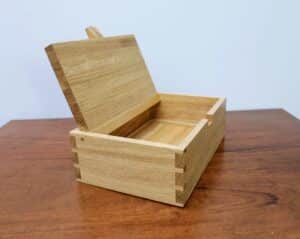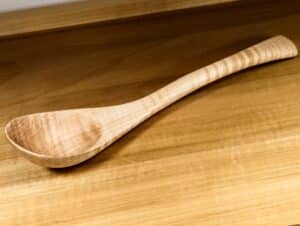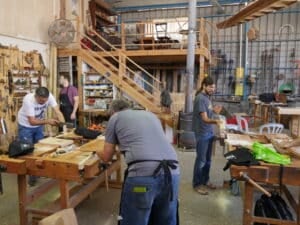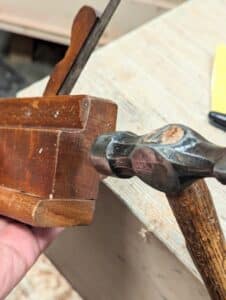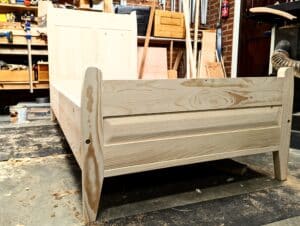Two years ago, I did a massive comparative review of ten different miter gauges. One of the most anticipated in the review was the Harvey MG-36. In spite of the high price and promise of quality, I found the gauge came up short in numerous areas and I had to give it a “do not buy” recommendation. Recently, Harvey released the MG-36 Pro and many of you asked me to provide an update. So here’s my Harvey MG-36 Pro review.
Normally I like to spend a few months with a product before doing a review, but this miter gauge is very similar to the non-pro version and I was able to spot the improvements and problems within minutes of opening the box. I then spent a few weeks actually using the gauge just to see how things played out.
Appearance
The fit and finish of the MG-36 Pro is just as beautiful as the original.
Price
I paid $399 in August of ’23 with a final price of $447.51 with shipping and tax. I’ve since monitored the price at Harveywoodworking.com and like seemingly all of their products, the price fluctuates by the day. The lowest price I’ve seen so far was $299. If the price is any higher than that, I’d recommend checking back daily and holding out for the lowest price possible.
The Miter Bar
The miter bar was extended 1″ which allows for cutting wider workpieces. The bar also now features an additional concentric washer at the user end, solving a wobble issue that existed in the original MG-36. Harvey also changed the concentric washers to a design that I find easier to adjust and more reliable.
The Protractor Head
Harvey upgraded the protractor head from the gappy 1 degree resolution of the MG-36 to a new gap-free vernier scale system boasting 0.1 degree resolution. They also improved the sloppy detent issue I observed previously. While somewhat snappier, the spring pin still feels too soft for my tastes. It’s still far too easy to pop in and out of the detents. Much like the original MG-36, there’s really no need for the pin retraction button. I personally feel the design of this system is flawed. Fortunately, if you give the fence a little wiggle you’ll find that it tends to settle into the center of the detent. I also found that tightening the knob usually sends the pin home. I say “usually” because as you’ll see in the video, you can still easily lock it down and find that you’re off the mark. Thanks to the new vernier scale, you can see exactly how much error is present and correct it if necessary.
The Fence
The fence is nearly identical (if not actually identical) to the original MG-36. I had an issue with mine where the red extension piece tilted back when tightened down. A replacement from Harvey corrected this issue. The fence extension is listed as 36″ long but I was able to measure about 40″, which is a nice bonus. Unfortunately, Harvey still refuses to correct the false claims on their website that their fence is the longest on the market. Tsk Tsk!
The Stop
While the previous stop had a couple of issues, none of those were deal-breakers. And thankfully, the problems I discovered in the previous version were actually improved. Unfortunately this was one step forward and two steps back, since the stop is now unusable for workpieces that aren’t at least 5/8″ thick. This is because there’s a 5/8″ gap between the stop and the fence. Of course, you can get around this problem by using a sacrificial fence (something you should be using anyway). But if you like to go commando with no sacrificial fence, the stop is going to prove problematic at some point.
The other bigger issue I found with the stop is that Harvey shortened the spine that rides in the fence slot by about 50%, resulting in 0.012″ of potential movement. So while the stop boasts 0.001″ micro-adjustability, a light tap of the stop can knock it out as much as 0.012″. I was able to test two of these stops and they both exhibited this issue. The movement was also confirmed by two other MG-36 Pro owners and Harvey themselves.
Customer Service
The customer service I received was much improved over my previous experience. In fact, it was stellar. They were friendly, responsive and eager to fix my issues. Unfortunately, the sloppy stop is a design failure that can’t be fixed with a Bandaid solution and a refund was offered if I felt the product didn’t meet my expectations.
Conclusion
I’m happy to say that the Harvey MG-36 Pro is a serviceable miter gauge. It’s not perfect and depending on the kind of work you do the sloppy stop issue might be a deal-breaker. The sloppiness in the detents is still a big disappointment. However, with the caveats discussed in the video you can achieve decent results. Overall, Harvey addressed pretty much every issue I found in my previous review. They either improved them greatly or fixed them. That said, if you’re in the market for a miter gauge I think the Jessem Mite-R-Excel II is still your best bet for the money. Even if you’re able to get the MG-36 Pro at $299 (the lowest price I’ve seen), the Jessem can be had for only $25 more. And the Jessem doesn’t suffer from any of the issues found in the MG-36 lineup.
The post Harvey MG-36 Pro Miter Gauge: Worth the Upgrade? appeared first on The Wood Whisperer.
from The Wood Whisperer https://ift.tt/ib6twfC
via IFTTT


